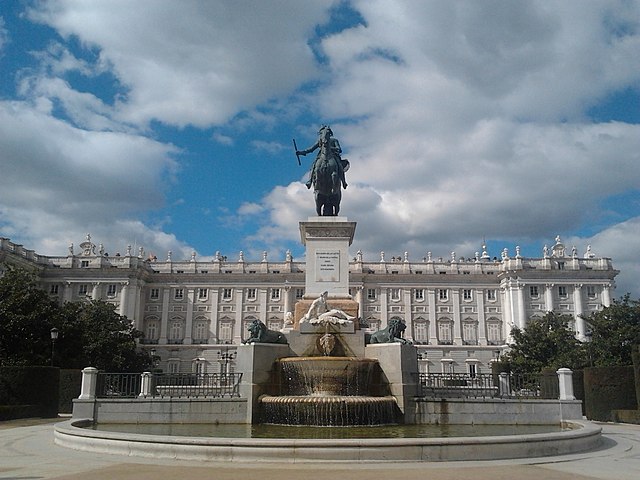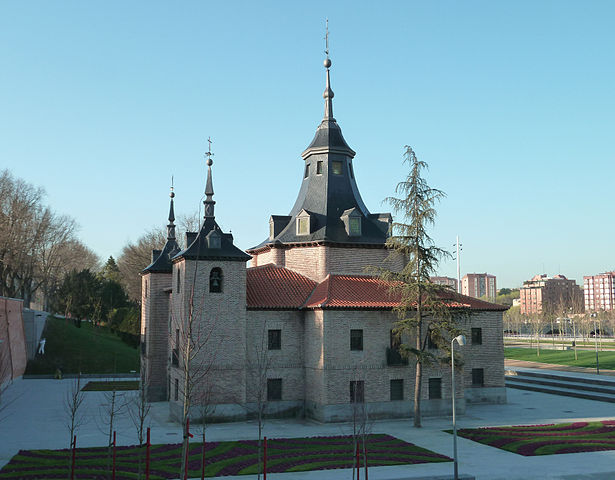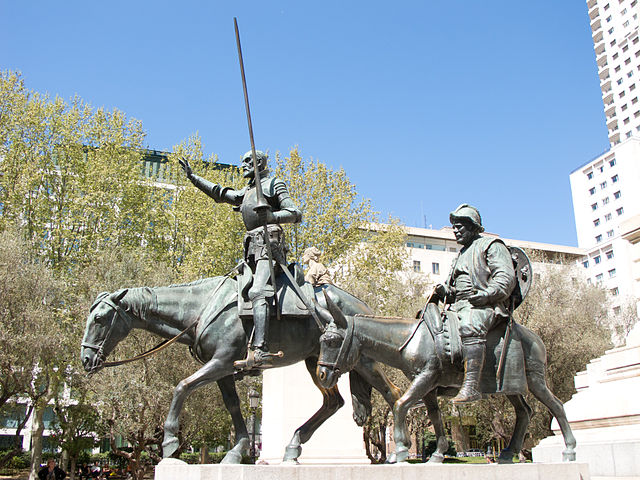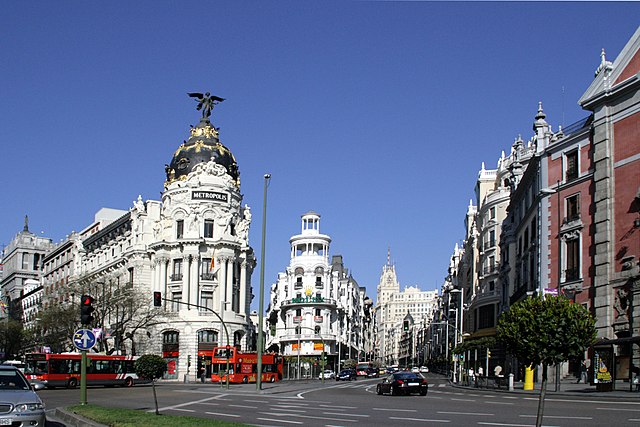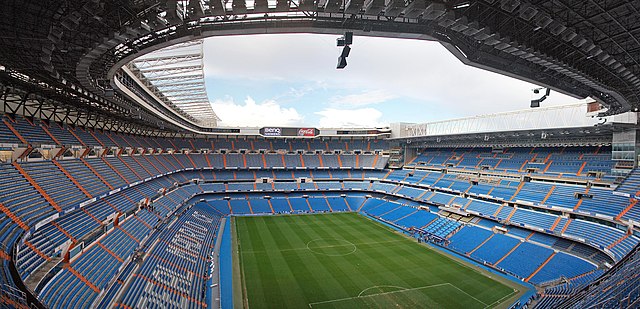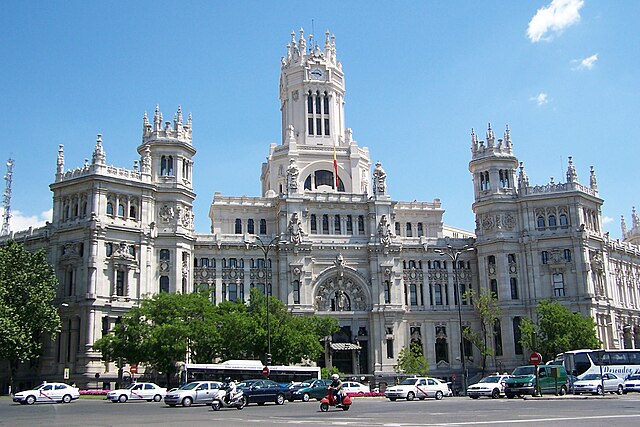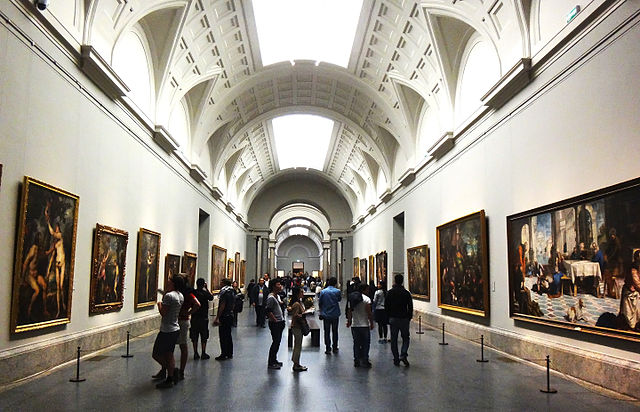Madrid, the capital of Spain, is where the old blends with the new. The city is known for its museums and nightlife. The Golden Triangle formed by the Prado, Thyssen Bornemisza and Reina Sofia museums is a masterpiece of Spain’s classical and modern art. Sit down at a tapas bar, stroll through cobbled streets, feel the cosmopolitan and relaxed vibe.
Madrid
The Royal Palace of Madrid (Spanish: Palacio Real de Madrid) is the official residence of the Spanish Royal Family at the city of Madrid, but it is only used for state ceremonies. The palace is located on the site of a 9th-century Alcázar ("Muslim-era fortress"). The old Alcázar was built on the location in the 16th century. After it burned 24 December 1734, King Philip V ordered a new palace built on the same site. Construction spanned the years 1738 to 1755. The palace has 135,000 square metres (1,450,000 sq ft) of floor space and contains 3,418 rooms. It is the largest royal palace in Europe by floor area.
The Temple of Debod (Spanish: Templo de Debod) is an ancient Egyptian temple that was dismantled and rebuilt in Madrid. In 1960, due to the construction of the Aswan High Dam and the consequent threat posed by its reservoir to numerous monuments and archaeological sites, UNESCO made an international call to save this rich historical legacy. As a sign of gratitude for the help provided by Spain in saving the Abu Simbel temples, the Egyptian state donated the temple of Debod to Spain in 1968.
Madrid
The Puerta del Sol (Spanish for "Gate of the Sun") is a public square in Madrid, one of the best known and busiest places in the city. This is the centre (Km 0) of the radial network of Spanish roads. The square also contains the famous clock whose bells mark the beginning of a new year. The New Year's celebration has been broadcast live on national television since 31 December 1962.
The Santiago Bernabéu Stadium (Spanish: Estadio Santiago Bernabéu) is the current home stadium of Real Madrid. Santiago Bernabéu is one of the most prestigious football venues. It has hosted the European Cup final on four occasions: in 1957, 1969, 1980, the UEFA Champions League Final in 2010. The final matches for the 1964 European Nations' Cup and the 1982 FIFA World Cup were also held at the Bernabéu.
Madrid
The Puerta de Alcalá ("Alcalá Gate" or "Citadel Gate") is a Neo-classical monument in the Plaza de la Independencia in Madrid. It is regarded as the first modern post-roman triumphal arch built in Europe, older than the similar monuments Arc de Triomphe in Paris and Brandenburg Gate in Berlin.
The Palacio de Cristal ("Crystal Palace") is a glass and metal structure located in Madrid's Buen Retiro Park. It was built in 1887 to exhibit flora and fauna from the Philippines, then a Spanish colonial possession. The Palacio de Cristal, in the shape of a Greek cross, is made almost entirely of glass set in an iron framework on a brick base, which is decorated with ceramics.
Madrid
The Prado Museum is the main Spanish national art museum, located in central Madrid. It features one of the world's finest collections of European art, dating from the 12th century to the early 20th century, based on the former Spanish Royal Collection, and unquestionably the best single collection of Spanish art. Founded as a museum of paintings and sculpture in 1819, it also contains important collections of other types of works. El Prado is one of the most visited sites in the world, and it is considered one of the greatest art museums in the world.
The Thyssen-Bornemisza Museum is an art museum in Madrid, located near the Prado Museum at one of city's main boulevards. It is known as part of the "Golden Triangle of Art", which also includes the Prado and the Reina Sofia national galleries. The Thyssen-Bornemisza fills the historical gaps in its counterparts' collections: in the Prado's case this includes Italian primitives and works from the English, Dutch and German schools, while in the case of the Reina Sofia it concerns Impressionists, Expressionists, and European and American paintings from the 20th century. The museum hosts over 1,600 paintings.
The Museo Nacional Centro de Arte Reina Sofía is Spain's national museum of 20th-century art. It was officially inaugurated on September 10, 1992, and is named for Queen Sofía. The museum is mainly dedicated to Spanish art. Highlights of the museum include excellent collections of Spain's two greatest 20th-century masters, Pablo Picasso and Salvador Dali.










